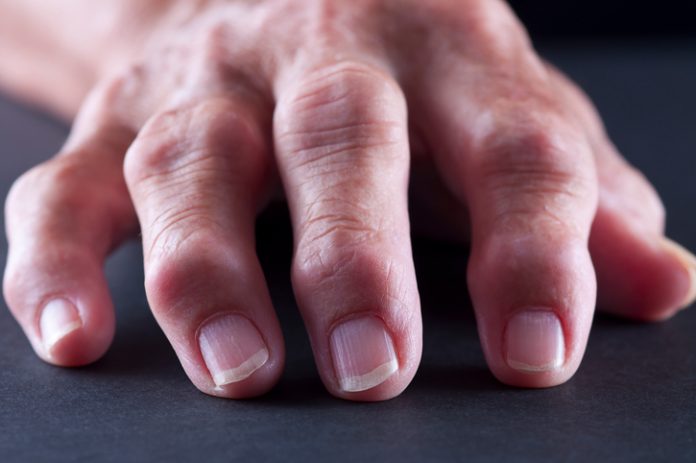
Early diagnosis is critical to the effective treatment of arthritis. Unfortunately, effective, non-invasive methods for the early detection of the two most common forms of arthritis osteoarthritis (OA) and rheumatoid arthritis (RA), are currently lacking. New research by a team of Chinese investigators may provide the impetus for a diagnostic testing of OA and RA via biomarkers identified in the oral microbiome.
While earlier studies provided evidence suggesting RA has a correlation with oral microbiome and may be affected by its dynamic variations, and another was conducted that compared oral microbiome in patients with RA and OA, neither screened for potential biomarkers for arthritis.
The new research, “Variations in oral microbiome profiles in rheumatoid arthritis and osteoarthritis with potential biomarkers for arthritis screening” published recently in Nature identified eight oral bacterial biomarkers were identified to differentiate RA from OA, that could provide the information needed for the development of non-invasive arthritis screening.
“Many clinical studies have shown that RA and OA may be associated with oral microbiota and are affected by it,” the authors wrote. “However, recent findings suggest that OA may also be regulated by the microbiome, but there are very few studies describing the potential effects of oral microbiota in patients with OA.
“In our study, we aim to describe the oral microbiome in patients with RA, OA and healthy subjects, and their potential association with RA and OA. We also attempted to distinguish RA and OA by identifying differences in oral microbiome and found a set of potential biomarkers for distinguishing RA and OA non-invasively.”
For this study, the investigators compared the oral microbiota profiles of 110 RA patients, 67 OA patients and 155 healthy subjects, which showed significant differences between RA patients, OA patients and the healthy controls. Using the information on the structural changes in the oral microbiota of RA and OA patients the team then explored microbiota functions based on inferred metagenomes.
“We compared the oral microbiota in patients with RA, OA and healthy subjects. We showed that profiling the bacteria associated with the oral cavity may have value in the detection of RA and OA,” the authors noted. “We also found that patients with RA and OA had an oral microbiota with higher microbial diversity compared to healthy subjects, indicating that there could be more harmful bacteria or opportunistic pathogens in the oral cavity of patients with RA and OA.”
As a result the researchers identified 16 oral pathogens associated with the RA and OA patient group. Further analysis narrowed that lsit down to eight —Actinomyces, Neisseria, Neisseria subflava, Haemophilus parainfluenzae, Haemophilus, Veillonella dispar, Prevotella and Veillonella— that provided the highest predictive values of arthritis.
The encouraging results suggest a braoder study with a larger clinical cohort to validate the findings, the researchers said.
“Despite significant advances in understanding pathophysiology of RA and OA, early diagnosis and therapeutic intervention remain a challenge. Rheumatoid factor (RF) and cyclic citrullinated peptides (CCPs) have usually been used as the biomarkers for RA, but have relatively low sensitivity and low specificity for early RA. Magnetic resonance imaging (MRI) techniques have been developed for early-stage evaluation of cartilage damage in OA, however, MRI is expensive and not easily/widely accessible,” the investigators concluded. “There are a host of advantages in using oral microbiota as a source of biomarkers for predicting and screening disease. Saliva is a non-invasive collection method that does not cause discomfort and pain to subjects.”













